-
 Bitcoin
Bitcoin $88,339.1961
0.91% -
 Ethereum
Ethereum $1,623.6446
-1.44% -
 Tether USDt
Tether USDt $1.0000
0.00% -
 XRP
XRP $2.0967
-1.79% -
 BNB
BNB $605.9401
0.19% -
 Solana
Solana $139.2951
-0.86% -
 USDC
USDC $0.9999
0.00% -
 Dogecoin
Dogecoin $0.1638
0.91% -
 TRON
TRON $0.2483
1.38% -
 Cardano
Cardano $0.6385
-1.29% -
 Chainlink
Chainlink $13.3308
-1.87% -
 Avalanche
Avalanche $20.1673
-2.64% -
 UNUS SED LEO
UNUS SED LEO $9.0629
-4.15% -
 Stellar
Stellar $0.2460
-5.31% -
 Sui
Sui $2.3030
1.33% -
 Shiba Inu
Shiba Inu $0.0...01249
-1.52% -
 Toncoin
Toncoin $2.9244
-3.95% -
 Hedera
Hedera $0.1729
-0.43% -
 Bitcoin Cash
Bitcoin Cash $346.6981
1.20% -
 Hyperliquid
Hyperliquid $18.1539
-1.20% -
 Litecoin
Litecoin $79.7883
-1.84% -
 Polkadot
Polkadot $3.7535
-5.04% -
 Dai
Dai $0.9999
-0.01% -
 Bitget Token
Bitget Token $4.4438
-1.20% -
 Ethena USDe
Ethena USDe $0.9992
0.00% -
 Pi
Pi $0.6312
-1.10% -
 Monero
Monero $217.0320
0.33% -
 Pepe
Pepe $0.0...08106
3.02% -
 Uniswap
Uniswap $5.3710
-1.84% -
 OKB
OKB $50.9721
-0.22%
What is EIP-1559?
EIP-1559, activated in August 2021, aims to improve gas fee efficiency and predictability on the Ethereum network by introducing a new transaction fee model with a base fee that is burned and a priority fee paid to miners.
Feb 20, 2025 at 07:18 pm

Key Points of EIP-1559
- EIP-1559 is a major upgrade to the Ethereum network that aims to improve gas fee efficiency and predictability.
- EIP-1559 was proposed by Ethereum co-founder Vitalik Buterin in April 2019 and was activated on August 5, 2021.
- EIP-1559 introduces a new transaction fee model that replaces the existing first-price auction system.
- Under EIP-1559, transaction fees are divided into two components: a base fee and a priority fee.
- The base fee is automatically adjusted based on network demand and is burned, thus reducing the supply of ETH.
- The priority fee is paid to miners and serves as an incentive for them to prioritize transactions.
- EIP-1559 also includes a new block size calculation mechanism that aims to improve network throughput.
What is EIP-1559?
EIP-1559, also known as the London hard fork, is a major upgrade to the Ethereum network that aims to improve gas fee efficiency and predictability. It was proposed by Ethereum co-founder Vitalik Buterin in April 2019 and was activated on August 5, 2021.
Prior to EIP-1559, the Ethereum network used a first-price auction system to determine transaction fees. Under this system, users were required to bid on the amount of gas they were willing to pay to have their transactions processed. This often led to high gas fees during periods of high network congestion, making it difficult for users to predict the cost of sending transactions.
EIP-1559 introduces a new transaction fee model that replaces the first-price auction system. Under EIP-1559, transaction fees are divided into two components: a base fee and a priority fee.
The base fee is automatically adjusted based on network demand. It is calculated by measuring the difference between the target block size and the actual block size. If the actual block size is below the target, the base fee decreases. If the actual block size is above the target, the base fee increases.
The base fee is burned, which means that it is removed from circulation and cannot be used to pay for transactions. This has the effect of reducing the supply of ETH and making it more valuable.
The priority fee is paid to miners and serves as an incentive for them to prioritize transactions. Users can choose to set a higher priority fee to ensure that their transactions are processed more quickly.
EIP-1559 also includes a new block size calculation mechanism that aims to improve network throughput. Under this mechanism, the block size is adjusted based on the number of transactions in the block. If the block is full, the block size is increased. If the block is not full, the block size is decreased.
This mechanism helps to ensure that the Ethereum network is able to process a consistent number of transactions per block, even during periods of high network congestion.
How does EIP-1559 affect gas fees?
EIP-1559 has had a significant impact on gas fees on the Ethereum network. Prior to EIP-1559, gas fees were highly unpredictable and often reached prohibitively high levels during periods of high network congestion. Under EIP-1559, gas fees have become more stable and predictable.
The base fee, which is the largest component of the transaction fee, is automatically adjusted based on network demand. This helps to ensure that gas fees remain at a reasonable level, even during periods of high congestion.
The priority fee, which is the smaller component of the transaction fee, is paid to miners and serves as an incentive for them to prioritize transactions. Users can choose to set a higher priority fee to ensure that their transactions are processed more quickly. This can be useful for time-sensitive transactions, such as those involving large amounts of money or those that are required for a particular deadline.
Overall, EIP-1559 has had a positive impact on gas fees on the Ethereum network. Gas fees have become more stable and predictable, making it easier for users to budget for the cost of sending transactions.
What are the benefits of EIP-1559?
EIP-1559 offers a number of benefits to the Ethereum network, including:
- Improved gas fee efficiency: EIP-1559 introduces a new transaction fee model that is more efficient than the previous first-price auction system. This helps to reduce the cost of sending transactions on the Ethereum network.
- Increased gas fee predictability: EIP-1559's new transaction fee model makes gas fees more predictable. Users can now estimate the cost of sending a transaction based on the current network demand.
- Reduced block size: EIP-1559's new block size calculation mechanism helps to reduce the size of blocks on the Ethereum network. This improves the network's efficiency and makes it possible to proces
Disclaimer:info@kdj.com
The information provided is not trading advice. kdj.com does not assume any responsibility for any investments made based on the information provided in this article. Cryptocurrencies are highly volatile and it is highly recommended that you invest with caution after thorough research!
If you believe that the content used on this website infringes your copyright, please contact us immediately (info@kdj.com) and we will delete it promptly.
- AVAX Price Prediction 2025: Will Avalanche Reach New Heights?
- 2025-04-22 17:50:12
- XRP Price Prediction Shows Bullish Momentum After Coinbase Lists Its Futures Contracts
- 2025-04-22 17:50:12
- Bitcoin is surging again, capturing the spotlight in the crypto world.
- 2025-04-22 17:45:12
- Pi Network (PI) Holds Above $0.63: $5 Price Prediction and Whale Accumulation Fuel Optimism
- 2025-04-22 17:45:12
- One of the cryptocurrencies that ranked in the eleventh place, Chainlink, has been in the spotlight as it is traded at $13.12
- 2025-04-22 17:40:12
- Pi Network's Token Structure Promises a Fair Launch
- 2025-04-22 17:40:12
Related knowledge
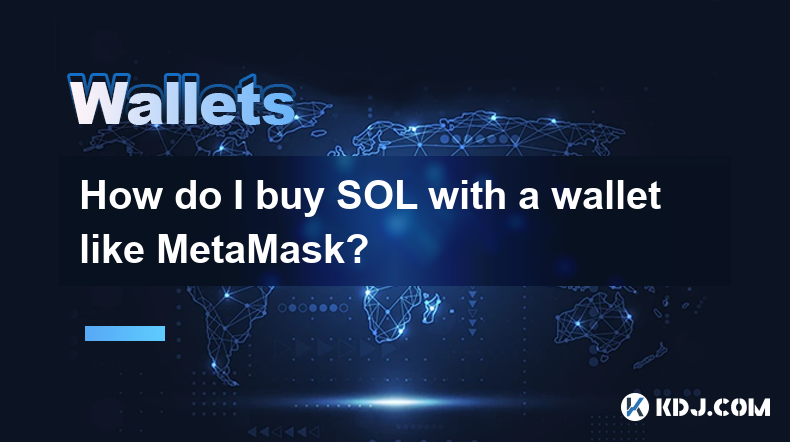
How do I buy SOL with a wallet like MetaMask?
Apr 20,2025 at 01:35pm
How do I Buy SOL with a Wallet Like MetaMask? Purchasing Solana (SOL) using a wallet like MetaMask involves a few steps, as MetaMask primarily supports Ethereum and Ethereum-based tokens. However, with the help of decentralized exchanges (DEXs) and some intermediary steps, you can acquire SOL. This article will guide you through the process in detail. S...
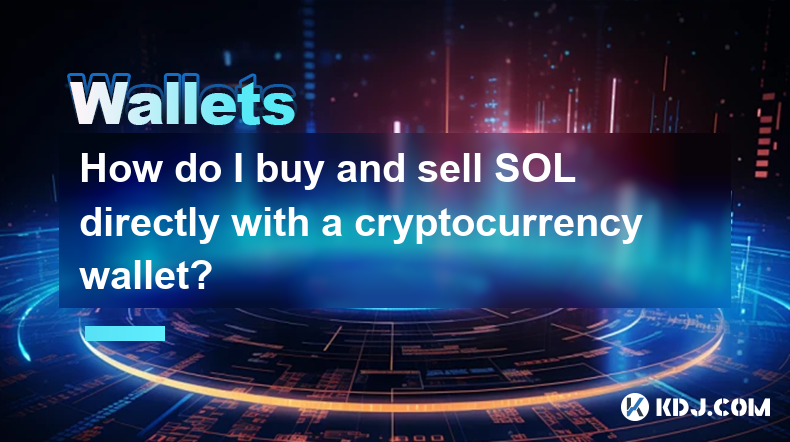
How do I buy and sell SOL directly with a cryptocurrency wallet?
Apr 19,2025 at 05:35pm
Introduction to Buying and Selling SOL with a Cryptocurrency WalletBuying and selling Solana (SOL) directly from a cryptocurrency wallet offers a convenient and secure way to manage your digital assets. Cryptocurrency wallets are essential tools for anyone looking to interact with the Solana blockchain. They allow you to store, send, and receive SOL wit...
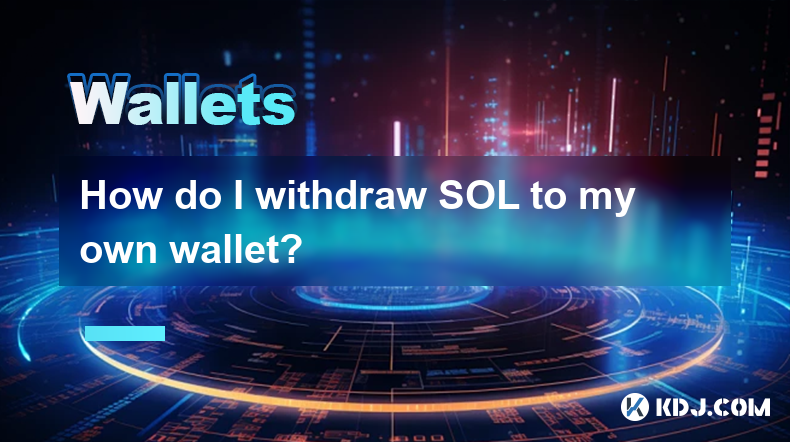
How do I withdraw SOL to my own wallet?
Apr 20,2025 at 04:21pm
Introduction to Withdrawing SOL to Your Own WalletWithdrawing Solana (SOL) to your own wallet is a straightforward process, but it requires careful attention to detail to ensure that your funds are transferred safely and efficiently. SOL is the native cryptocurrency of the Solana blockchain, known for its high throughput and low transaction fees. Whethe...
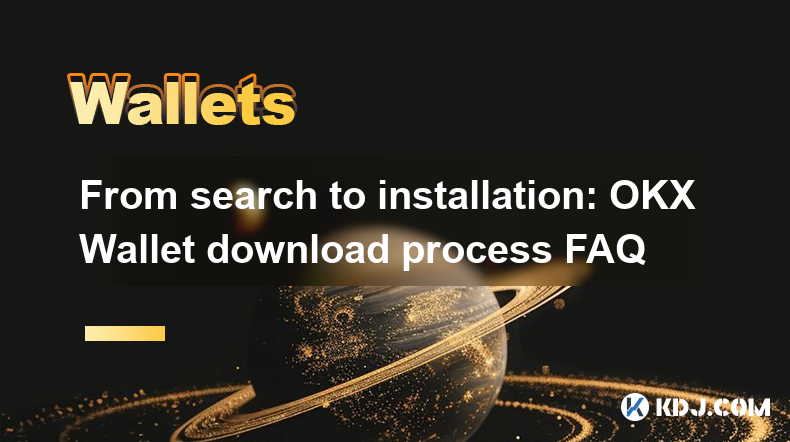
From search to installation: OKX Wallet download process FAQ
Apr 17,2025 at 02:00pm
The OKX Wallet is a popular choice among cryptocurrency enthusiasts for managing their digital assets securely and efficiently. Understanding the process from searching for the wallet to its installation can be crucial for new users. This article will guide you through the entire process, providing detailed steps and answers to frequently asked question...
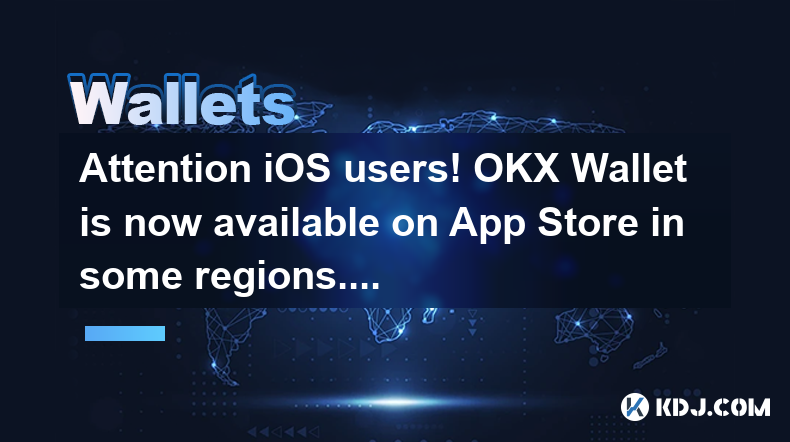
Attention iOS users! OKX Wallet is now available on App Store in some regions. How to check its availability?
Apr 20,2025 at 05:21pm
Attention iOS users! OKX Wallet is now available on App Store in some regions. If you're eager to check its availability and start using this versatile cryptocurrency wallet, follow our detailed guide. We'll walk you through the steps to confirm if OKX Wallet is accessible in your region, and provide insights into its features and benefits. Checking OKX...
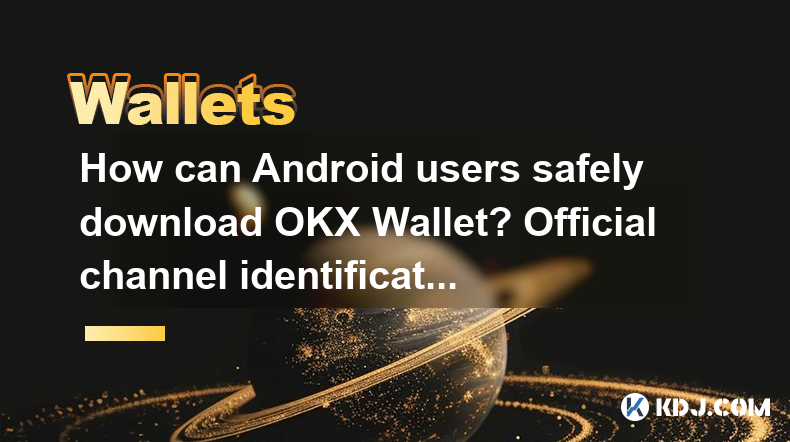
How can Android users safely download OKX Wallet? Official channel identification guide
Apr 19,2025 at 10:50pm
How can Android users safely download OKX Wallet? Official channel identification guide Ensuring the safety and security of your cryptocurrency assets begins with downloading apps from trusted sources. For Android users interested in using OKX Wallet, it's crucial to identify and use the official channels to avoid downloading malicious software. This gu...

How do I buy SOL with a wallet like MetaMask?
Apr 20,2025 at 01:35pm
How do I Buy SOL with a Wallet Like MetaMask? Purchasing Solana (SOL) using a wallet like MetaMask involves a few steps, as MetaMask primarily supports Ethereum and Ethereum-based tokens. However, with the help of decentralized exchanges (DEXs) and some intermediary steps, you can acquire SOL. This article will guide you through the process in detail. S...

How do I buy and sell SOL directly with a cryptocurrency wallet?
Apr 19,2025 at 05:35pm
Introduction to Buying and Selling SOL with a Cryptocurrency WalletBuying and selling Solana (SOL) directly from a cryptocurrency wallet offers a convenient and secure way to manage your digital assets. Cryptocurrency wallets are essential tools for anyone looking to interact with the Solana blockchain. They allow you to store, send, and receive SOL wit...

How do I withdraw SOL to my own wallet?
Apr 20,2025 at 04:21pm
Introduction to Withdrawing SOL to Your Own WalletWithdrawing Solana (SOL) to your own wallet is a straightforward process, but it requires careful attention to detail to ensure that your funds are transferred safely and efficiently. SOL is the native cryptocurrency of the Solana blockchain, known for its high throughput and low transaction fees. Whethe...

From search to installation: OKX Wallet download process FAQ
Apr 17,2025 at 02:00pm
The OKX Wallet is a popular choice among cryptocurrency enthusiasts for managing their digital assets securely and efficiently. Understanding the process from searching for the wallet to its installation can be crucial for new users. This article will guide you through the entire process, providing detailed steps and answers to frequently asked question...

Attention iOS users! OKX Wallet is now available on App Store in some regions. How to check its availability?
Apr 20,2025 at 05:21pm
Attention iOS users! OKX Wallet is now available on App Store in some regions. If you're eager to check its availability and start using this versatile cryptocurrency wallet, follow our detailed guide. We'll walk you through the steps to confirm if OKX Wallet is accessible in your region, and provide insights into its features and benefits. Checking OKX...

How can Android users safely download OKX Wallet? Official channel identification guide
Apr 19,2025 at 10:50pm
How can Android users safely download OKX Wallet? Official channel identification guide Ensuring the safety and security of your cryptocurrency assets begins with downloading apps from trusted sources. For Android users interested in using OKX Wallet, it's crucial to identify and use the official channels to avoid downloading malicious software. This gu...
See all articles























































































